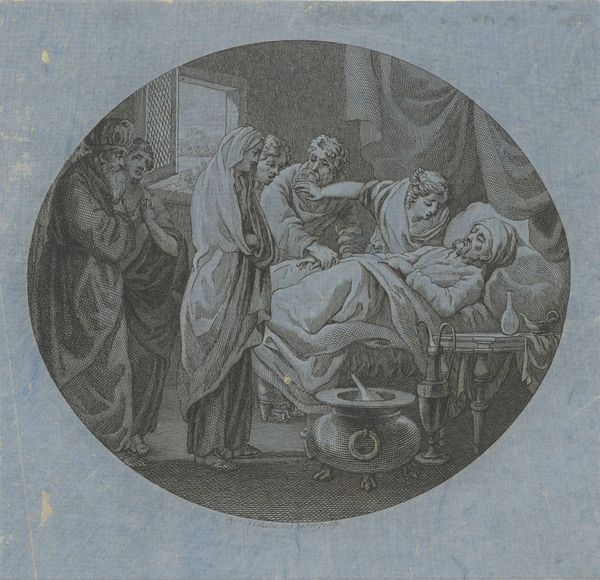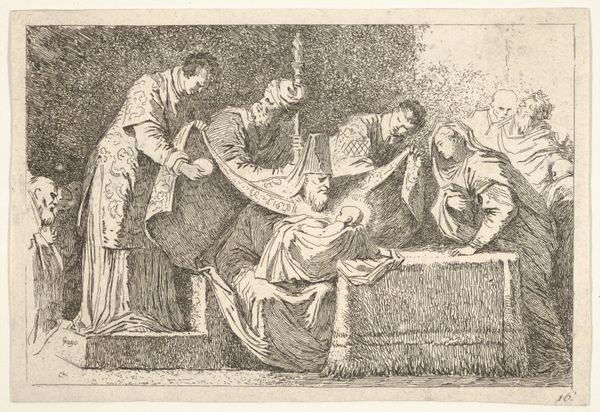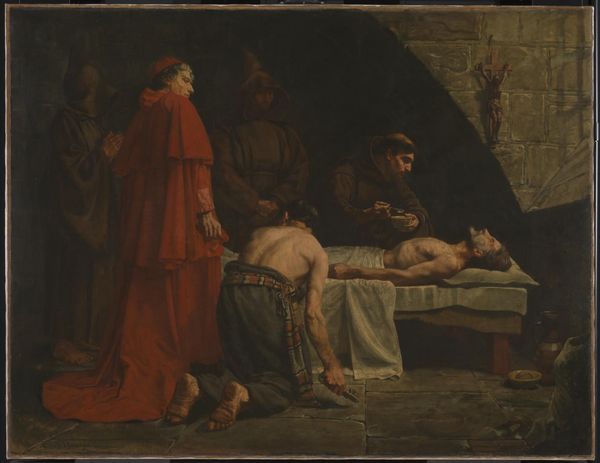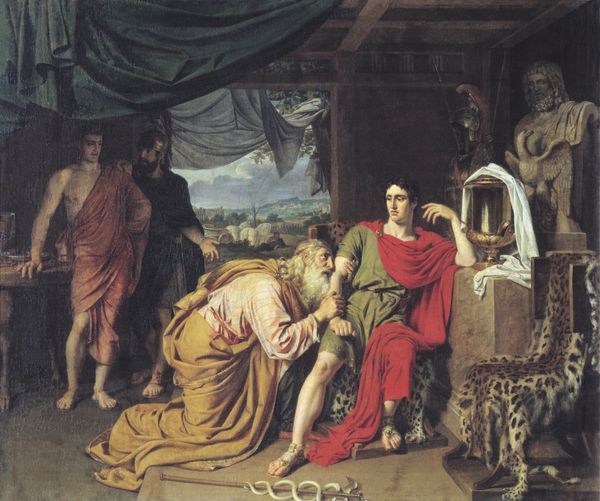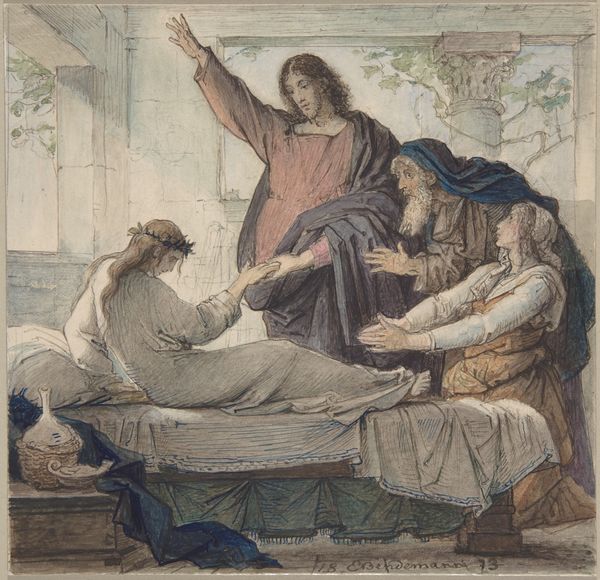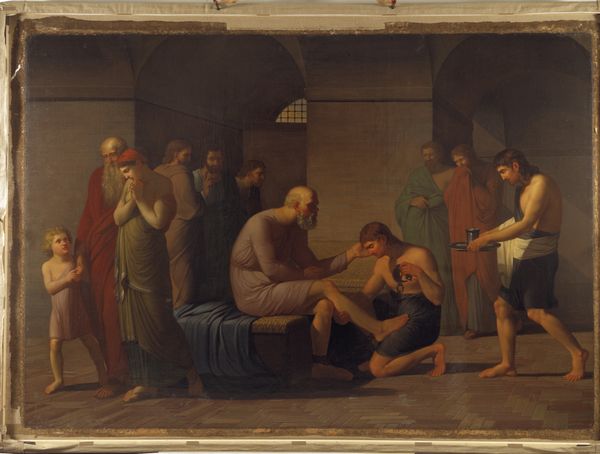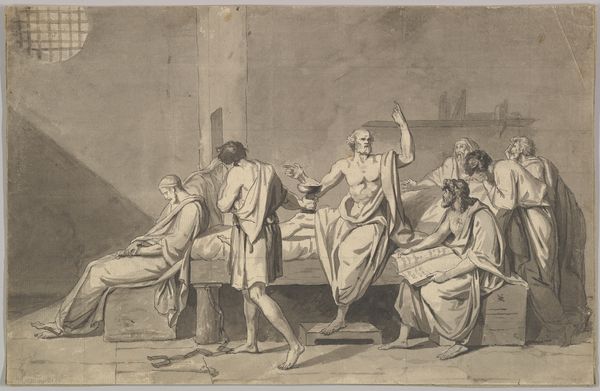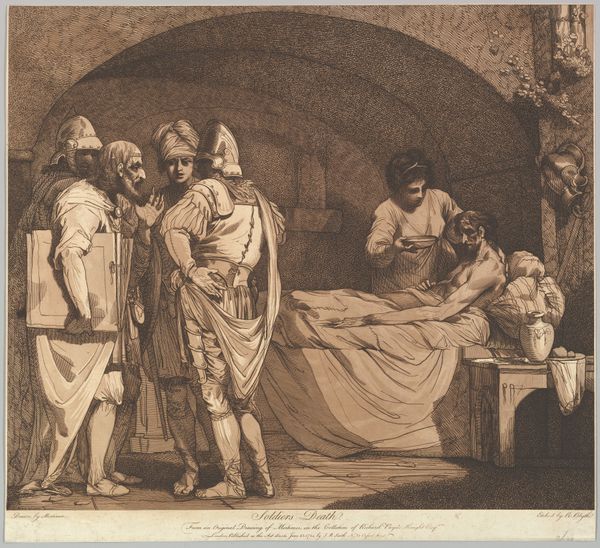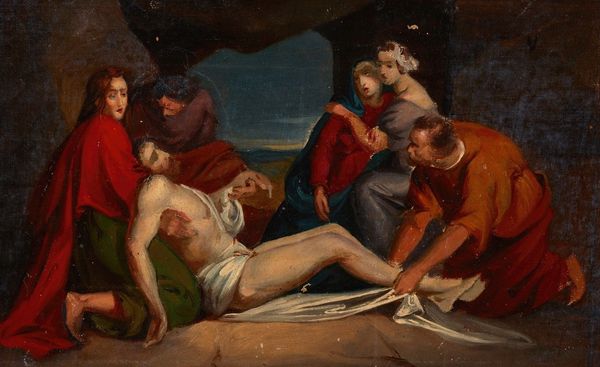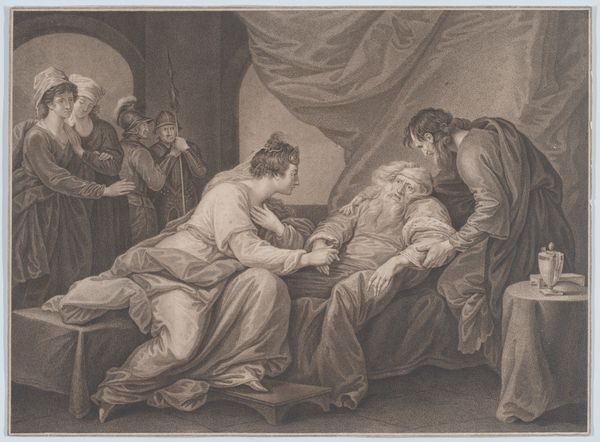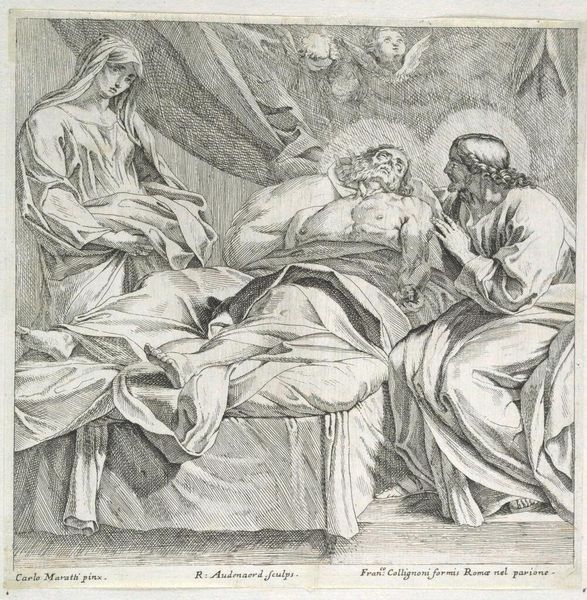
painting, oil-paint
#
neoclacissism
#
painting
#
oil-paint
#
figuration
#
oil painting
#
underpainting
#
painting painterly
#
history-painting
#
academic-art
Copyright: Public domain
Editor: This is "Lamentation over the corpse of Socrates" by Vincenzo Camuccini, a painting rendered with oil paints. The overall mood is somber, filled with muted tones that amplify the grief. What draws my attention most is the detailed underpainting; what can you tell me about it? Curator: A materialist reading immediately compels us to consider Camuccini’s process. Look at the careful layering of pigment, the controlled application. Oil paint allows for revision, for a slow and deliberate crafting of the image. How does this act of construction influence our reading of the scene? Does the artist’s labor resonate with Socrates’s own dedication to a life of reasoned activity? Editor: I suppose, yes. It does seem almost a reverence through labor... Curator: Furthermore, consider the consumption of art in the Neoclassical period. History paintings like this became commodities, serving as moral instruction for the bourgeois viewer. But how much agency is really being delivered? Camuccini meticulously recreating a death that affirms particular philosophical leanings…who does that truly benefit and what dialogue truly opens? What stories might be missed if we always fall into a production affirming the status quo? Editor: That’s a very good point, actually! There's also something deeply human about gathering to support and witness his last rites. Do you feel Camuccini achieved the Neoclassical goal of providing moral guidance here? Curator: Possibly, but perhaps also limiting potential narratives with prescribed production and historical consumption habits. In focusing so diligently on replicating historical narrative in such a prescribed fashion, are avenues for exploring a fuller landscape closed down in favor of profit for both himself, his subject and others involved? Is this just history or active economic material? Editor: Wow, that really shifts my perspective on the piece. I guess there are different readings available in the cultural echoes of material and means, instead of just the depicted event. Curator: Indeed. By engaging with material and context, it asks that we question, and that becomes an action, right?
Comments
No comments
Be the first to comment and join the conversation on the ultimate creative platform.

